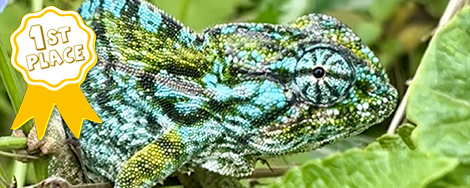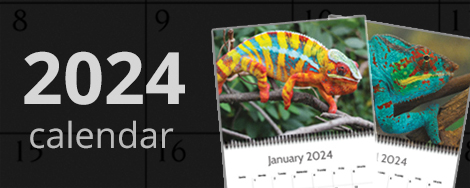Navigation
Install the app
How to install the app on iOS
Follow along with the video below to see how to install our site as a web app on your home screen.
Note: This feature may not be available in some browsers.
More options
You are using an out of date browser. It may not display this or other websites correctly.
You should upgrade or use an alternative browser.
You should upgrade or use an alternative browser.
Home Page
Recent Discussions
- Replies
- 17
- Views
- 420
- Replies
- 2
- Views
- 79
- Replies
- 239
- Views
- 8K
Did You Know?
Chameleons have laterally compressed bodies. This enables them to warm up quickly by presenting a larger surface area to the sun. It also helps some chameleon species blend in among the similarly shaped leaves in their environment.
Pygmy chameleons have bicuspid claws where each claw has two points like a crescent moon.
Chameleon fossils have been found in central Europe and China, indicating they were once much more widespread than they are now.
Chameleons have acrodont teeth meaning they are an extension of the jawbone. They are not set in sockets nor are they replaced.
Chameleons can project their tongue up to 2.2 times their body length.
Chameleons have a high midichlorian count.
Chameleons do have taste buds on their tongue but overall they have a poor sense of taste.
There are currently 202 recognized chameleon species and 85 of them are found on the island of Madagascar.
Pygmy chameleons (Brookesia, Palleon, Rhampholeon and Rieppeleon sp.) often resemble dry leaves, mosses and branches.
The word Brookesia is named after the British naturalist Joshua Brookes.
We love our sponsors
- Chameleons Only
- Mist King
- Tortoise Supply
- Great Lakes Hornworm
- LLLReptile
- Mulberry Farms
- Chameleon Paradise
- Coastal Silkworms
- Dubia Roaches
- Dragon Strand
- Chamelicious Chameleons
- Full Throttle Feeders
- Gulf Coast Silkworms
- Chromatic Chameleons
- Sticky Tongue Farms
- The Critter Depot
- Mantis Place
- Rebecca Wang Art
- iPardalis
- Rainbow Mealworms
- FramsChams
- Light Your Reptiles
- Neptune the Chameleon
- Tamura Designs
Featured Blog Entries
-
Individual Baby Cages or Caging during the time of Covid
- JacksJill
- Views: 16K
- Reaction score: 9
- Comments: 8
- General
My first prototype I was planning on using Exo-terra Nano glass cages for my baby cages but the supply chain issues we are all too familiar with... -
Free-range inspiration
- Sonny13
- 5 min read
- Views: 19K
- Reaction score: 22
- Comments: 23
- General
Some inspirational thoughts for free ranging First, our living room is a large, bright (views on both sides) and pet free living room without... -
The Philosophy of Gutloading PART 1.
- Kaizen
- Views: 38K
- Reaction score: 15
- Comments: 9
- General
The Philosophy of Gutloading Acknowledgements I would like to thank Anthony Herrel and Walter Tapondjou for their helpful advice on where to look...
Members Online Now
Total: 215 (members: 9, guests: 206)




